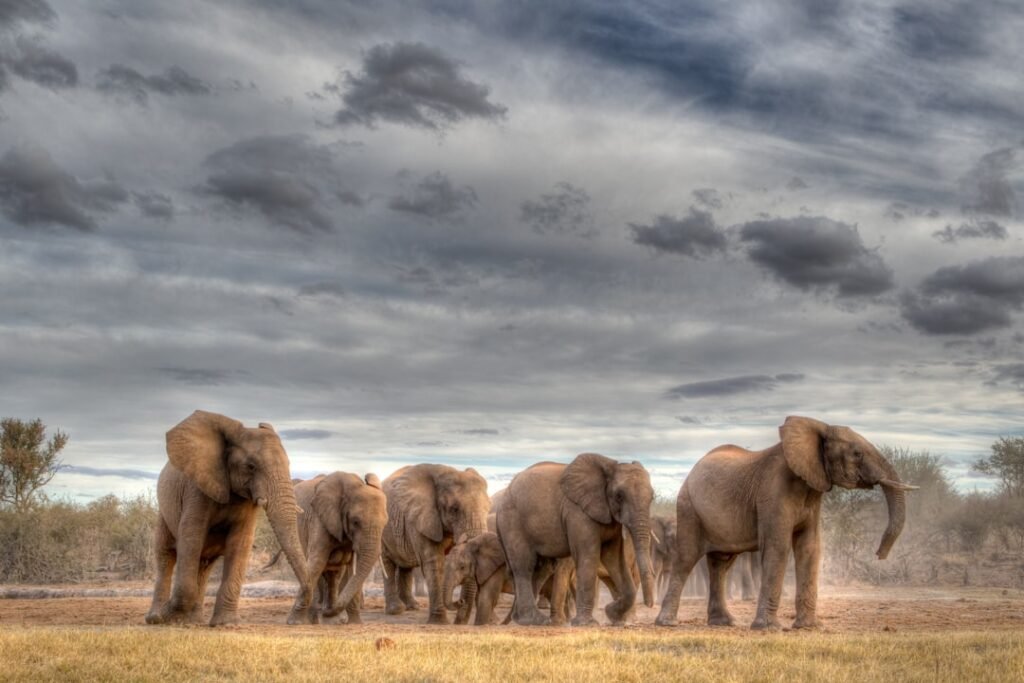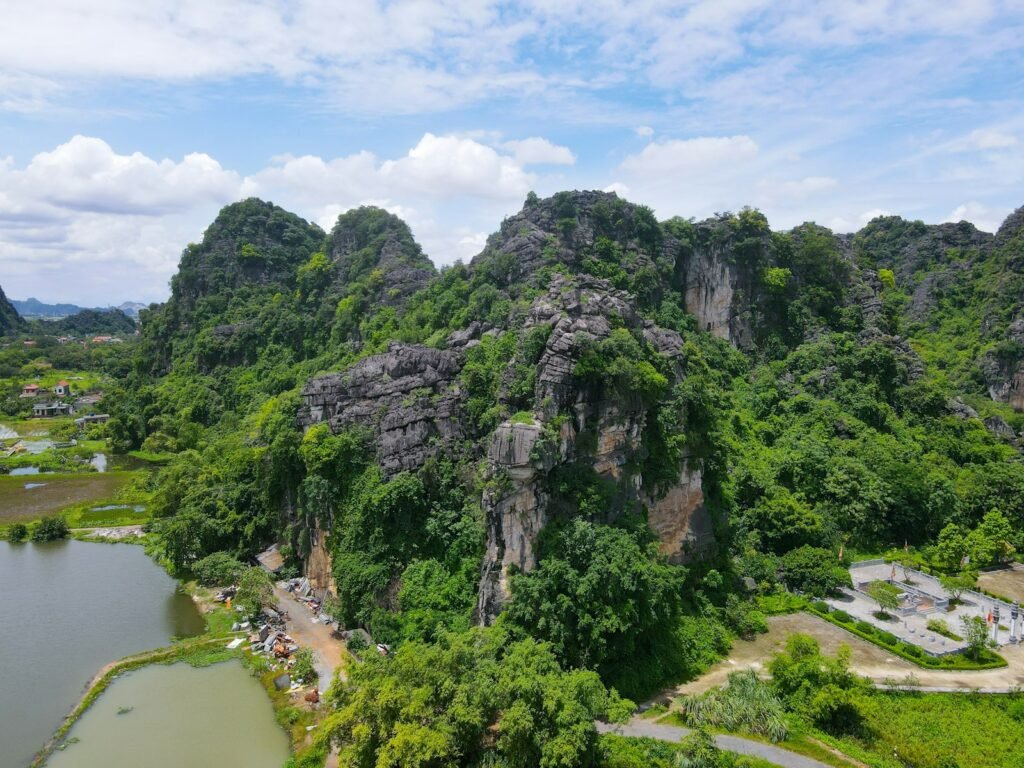Beneath the serene surface of ornamental ponds and ancient rivers lies a captivating story of evolution, human intervention, and aquatic artistry. The vibrant koi swimming gracefully in Japanese gardens and the humble carp thriving in muddy waters across continents share far more than meets the eye. These remarkable fish represent thousands of years of natural selection intertwined with human creativity, creating a living testament to both nature’s resilience and humanity’s passion for beauty.
The Ancient Origins of Cyprinidae

The story begins millions of years ago when the Cyprinidae family first emerged in the freshwater systems of Asia. This massive fish family, which includes both carp and koi, evolved sophisticated survival mechanisms that would eventually make them some of the most adaptable freshwater species on Earth. Their ancestors developed specialized pharyngeal teeth for crushing plant matter and small invertebrates, along with barbels that function like underwater taste buds.
Fossil evidence suggests that early carp-like species spread across Asia during the Miocene epoch, roughly 15 million years ago. These primitive fish possessed the same hardy constitution that defines modern carp, allowing them to colonize diverse aquatic environments from fast-flowing rivers to stagnant ponds. The evolutionary success of these early cyprinids laid the foundation for one of nature’s most remarkable transformation stories.
The Common Carp: Nature’s Survivor
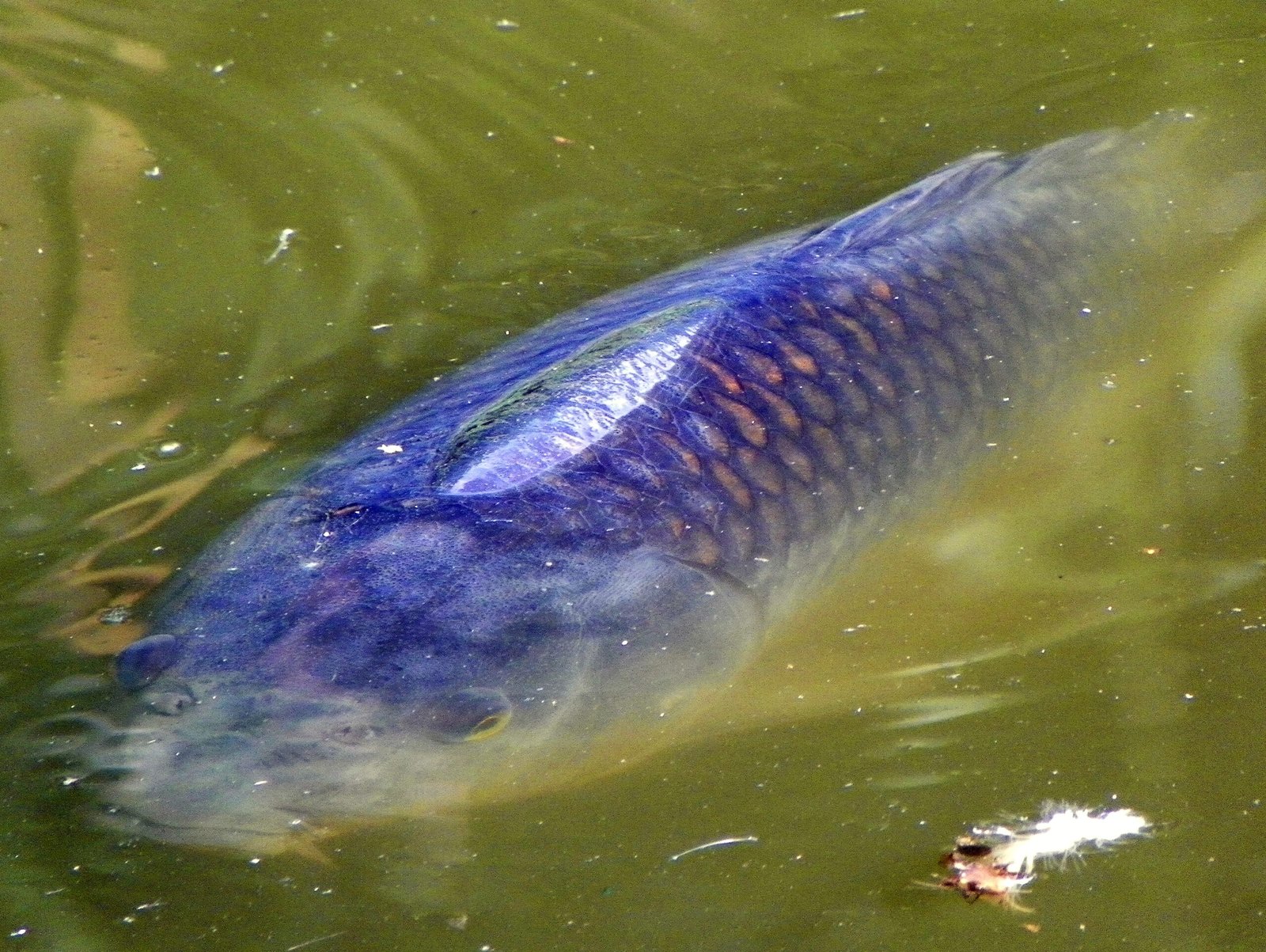
Cyprinus carpio, the common carp, stands as one of nature’s most resilient creations. These remarkable fish can survive in water temperatures ranging from near-freezing to over 100 degrees Fahrenheit, making them virtually indestructible in most freshwater environments. Their ability to extract oxygen from water with extremely low dissolved oxygen levels has earned them the nickname “living torpedoes” among aquatic biologists.
What makes carp truly extraordinary is their omnivorous appetite and bottom-feeding behavior. They can consume everything from aquatic plants and algae to small fish, insects, and even organic debris. This dietary flexibility, combined with their rapid reproduction rate, has allowed carp to colonize waters across six continents. A single female carp can produce up to 2 million eggs in a breeding season, ensuring species survival even in harsh conditions.
The Birth of Koi: From Food to Art
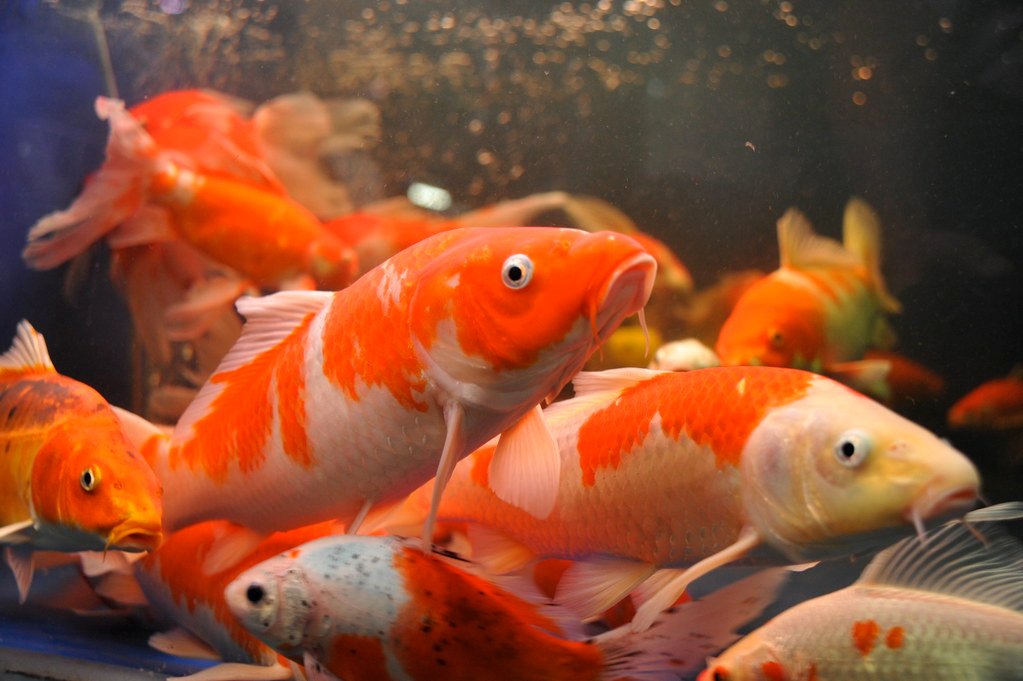
The transformation of humble carp into the magnificent koi we know today began in 19th century Japan, though the practice of carp cultivation dates back over 2,000 years. Japanese farmers initially raised carp in rice paddies as a protein source during harsh winters. However, genetic mutations occasionally produced fish with unusual color patterns that caught the farmers’ attention.
The pivotal moment came when these colorful variants were no longer destined for the dinner table but instead became prized for their beauty. Selective breeding programs began in the mountainous Niigata Prefecture, where farmers started crossing the most vibrant specimens. This marked the birth of modern koi culture, transforming a survival necessity into an art form that would captivate the world.
The Japanese term “nishikigoi,” meaning “brocaded carp,” perfectly captures the essence of these living jewels. Each koi became a canvas displaying nature’s artistry, with patterns and colors that seemed almost impossible to occur naturally.
Genetic Foundations: The Science Behind Beauty

The stunning variety of koi colors and patterns stems from complex genetic mechanisms that control pigmentation and pattern formation. Scientists have identified numerous genes responsible for different color expressions, including those controlling red, black, white, yellow, and blue pigments. These genes interact in intricate ways, creating the countless varieties we see today.
Melanophores produce black pigments, while xanthophores create yellow hues, and iridophores generate the metallic sheen found in some koi varieties. The distribution and density of these pigment cells, controlled by multiple genetic factors, determine whether a koi displays solid colors, intricate patterns, or striking contrasts. Environmental factors like water temperature, diet, and stress levels can also influence color expression, making each koi’s appearance somewhat dynamic throughout its lifetime.
The Anatomy of Adaptation

Both koi and carp possess remarkable anatomical features that have remained largely unchanged despite centuries of selective breeding. Their streamlined bodies, covered in protective scales, allow for efficient swimming while their lateral line system detects vibrations and water movement with incredible precision. This sensory system functions like an underwater radar, helping them navigate murky waters and detect approaching predators or food sources.
The barbels extending from their mouths serve as highly sensitive chemical detectors, capable of identifying food particles and chemical gradients in the water. These “whiskers” contain thousands of taste buds, making them essentially mobile tongues that help carp and koi locate food even in complete darkness. Their pharyngeal teeth, located in their throats, can crush tough plant material and shells, demonstrating their evolutionary adaptation to diverse food sources.
Behavioral Patterns: Intelligence in the Water
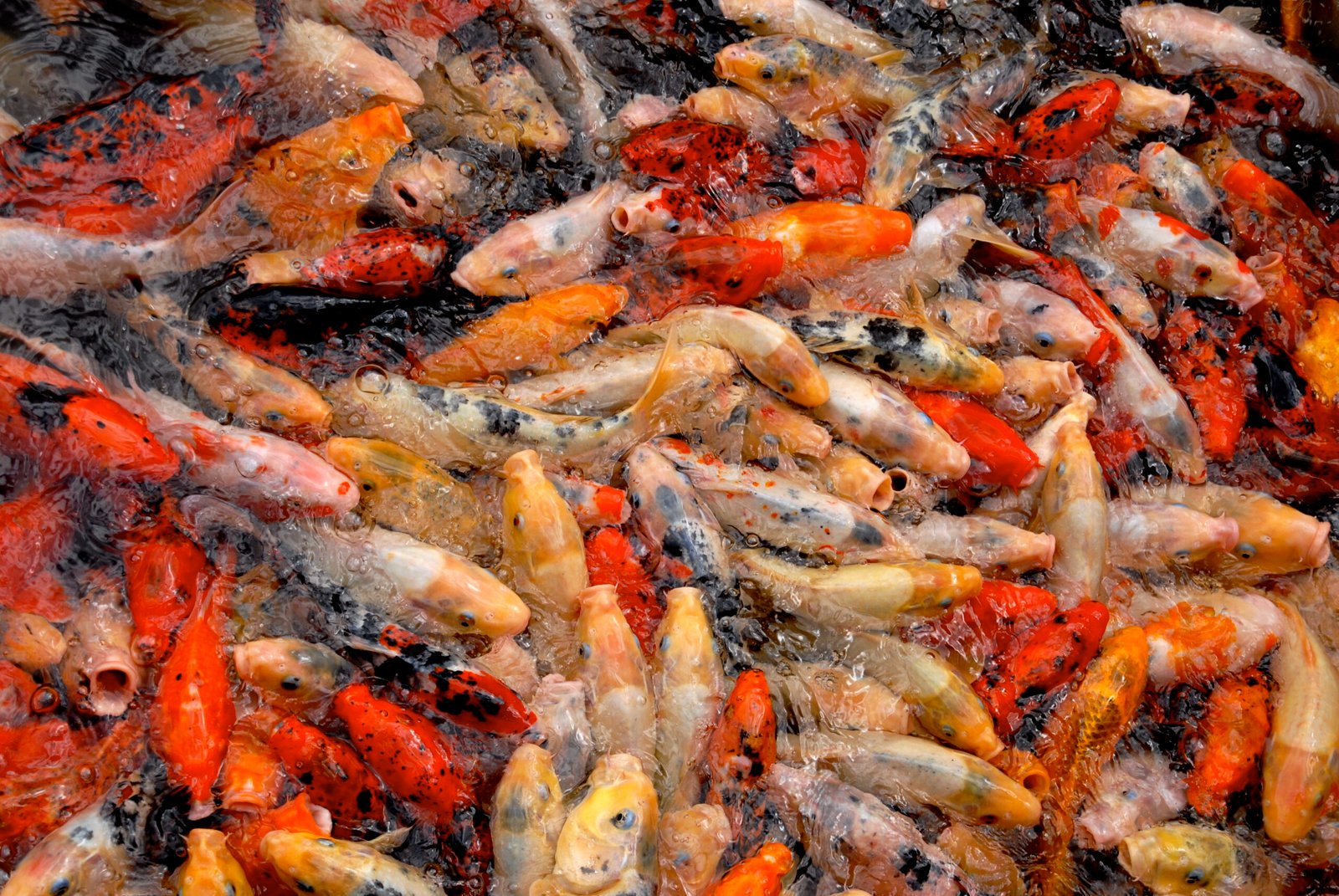
Contrary to popular belief, both koi and carp demonstrate remarkable intelligence and complex social behaviors. They can learn to recognize individual humans, respond to their names, and even perform simple tricks when properly trained. Some koi have been observed exhibiting problem-solving abilities, such as navigating mazes or manipulating objects to obtain food rewards.
Their social structure includes established hierarchies and communication systems that involve body language, color changes, and even subtle chemical signals. During breeding season, male koi and carp engage in elaborate courtship rituals, chasing females through specific swimming patterns while displaying their most vibrant colors. These behaviors demonstrate that beneath their serene exterior lies a complex cognitive world that scientists are only beginning to understand.
Environmental Adaptability: Masters of Survival

The success of carp and koi across diverse environments stems from their extraordinary physiological adaptability. They can enter a state of dormancy during winter months, slowing their metabolism to near-hibernation levels while remaining conscious and alert. This ability allows them to survive in frozen ponds where other fish species would perish.
Their kidney function adapts to different water conditions, allowing them to regulate salt balance whether in soft mountain streams or mineral-rich lakes. During drought conditions, carp can survive in mud burrows for extended periods, breathing through their skin and extracting moisture from their surroundings. This remarkable resilience explains why carp have become established in virtually every freshwater ecosystem they’ve encountered.
Cultural Significance: Symbols of Prosperity

In Japanese culture, koi represent perseverance, courage, and determination, stemming from their legendary ability to swim upstream against powerful currents. The famous legend of koi transforming into dragons after successfully climbing a waterfall has made them symbols of transformation and achievement. This cultural significance extends beyond mere decoration, embedding koi deeply in Japanese philosophy and spiritual practices.
Different koi varieties carry specific meanings in Japanese tradition. The red and white Kohaku represents success in career and family life, while the black, white, and red Sanke symbolizes love and relationships. These cultural associations have elevated koi from simple ornamental fish to living embodiments of human aspirations and values.
Breeding Techniques: The Art of Perfection
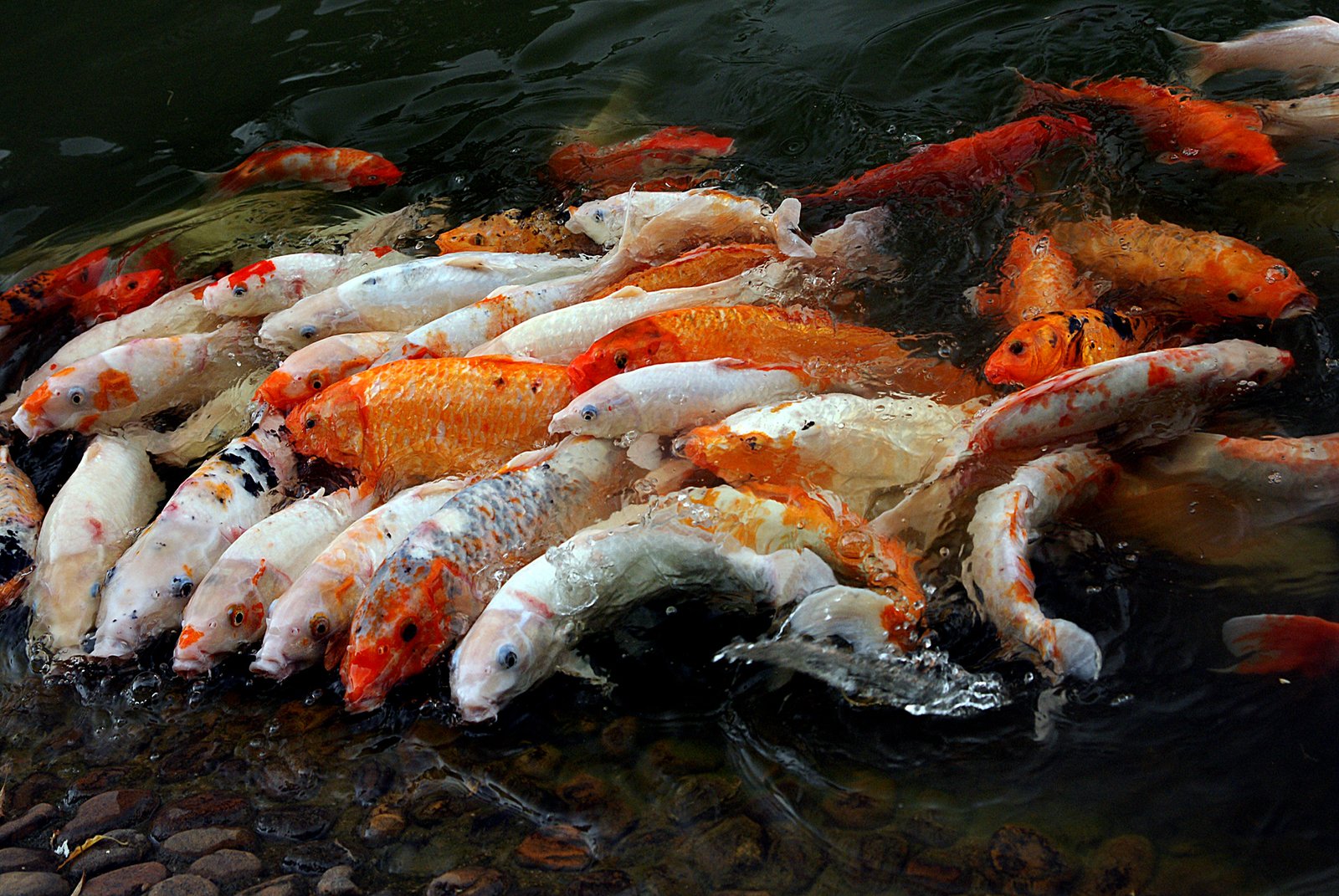
Modern koi breeding combines ancient techniques with cutting-edge genetic science to produce specimens of unprecedented beauty and quality. Master breeders, known as “koi artisans,” spend decades perfecting their craft, learning to identify subtle genetic markers that predict future color development and pattern formation. The breeding process involves carefully selecting parent fish based on their genetic lineage, physical characteristics, and proven breeding performance.
Temperature control during spawning and fry development proves crucial for optimal color expression and pattern formation. Breeders manipulate water temperature, lighting conditions, and nutrition to encourage specific genetic expressions while culling inferior specimens to maintain breeding stock quality. This selective pressure has created koi varieties that would be impossible to achieve through natural selection alone.
Varieties and Classification: A Rainbow Underwater
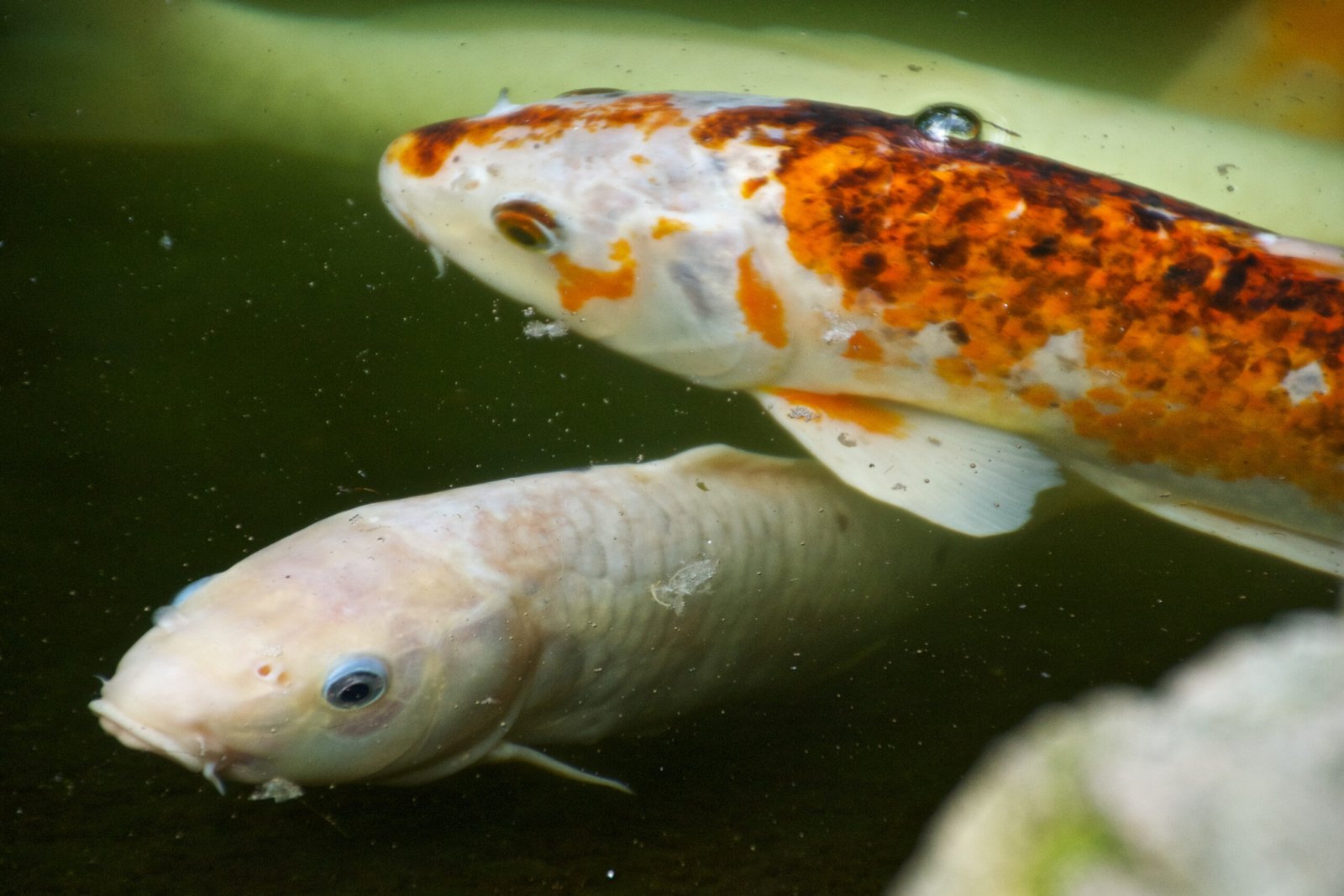
The world of koi encompasses over 100 recognized varieties, each with specific standards for color, pattern, and body conformation. The most prized varieties include the pure red and white Kohaku, the dramatic black and white Shiro Utsuri, and the metallic gold Yamabuki Ogon. Each variety represents generations of selective breeding focused on achieving specific aesthetic goals.
Classification systems evaluate koi based on color distribution, pattern symmetry, body shape, and fin development. The most valuable specimens display perfect balance between all these elements, creating living artwork that can command prices exceeding luxury automobiles. Championship koi competitions judge these criteria with scientific precision, maintaining standards that preserve the integrity of each variety.
Global Spread: From Asia to the World

The journey of carp and koi from their Asian origins to global distribution represents one of the most successful biological expansions in recorded history. European colonists introduced common carp to North America in the 1870s, where they quickly established self-sustaining populations. Today, carp inhabit waters across all continents except Antarctica, demonstrating their remarkable adaptability to diverse climates and ecosystems.
Koi followed a different path, spreading through the ornamental fish trade and cultural exchange. Japanese immigrants brought koi culture to Hawaii and California, while diplomatic gifts of prized specimens introduced them to Europe and other regions. This global distribution has created international communities of koi enthusiasts who share breeding techniques, compete in shows, and preserve traditional Japanese practices.
Ecological Impact: The Double-Edged Sword

The widespread distribution of carp has created significant ecological challenges in many regions where they’ve been introduced. Their bottom-feeding behavior stirs up sediment, reducing water clarity and disrupting aquatic plant communities. In some ecosystems, carp populations have grown so large that they’ve altered the fundamental structure of aquatic food webs, competing with native species for resources.
However, in their native range and properly managed environments, carp play important ecological roles as both predators and prey. They help control insect populations, process organic matter, and serve as food sources for larger predators. The key lies in understanding and managing their populations rather than viewing them as inherently problematic. Some regions have developed innovative management strategies that utilize carp’s natural behaviors for ecosystem benefits.
Nutrition and Health: The Science of Koi Care
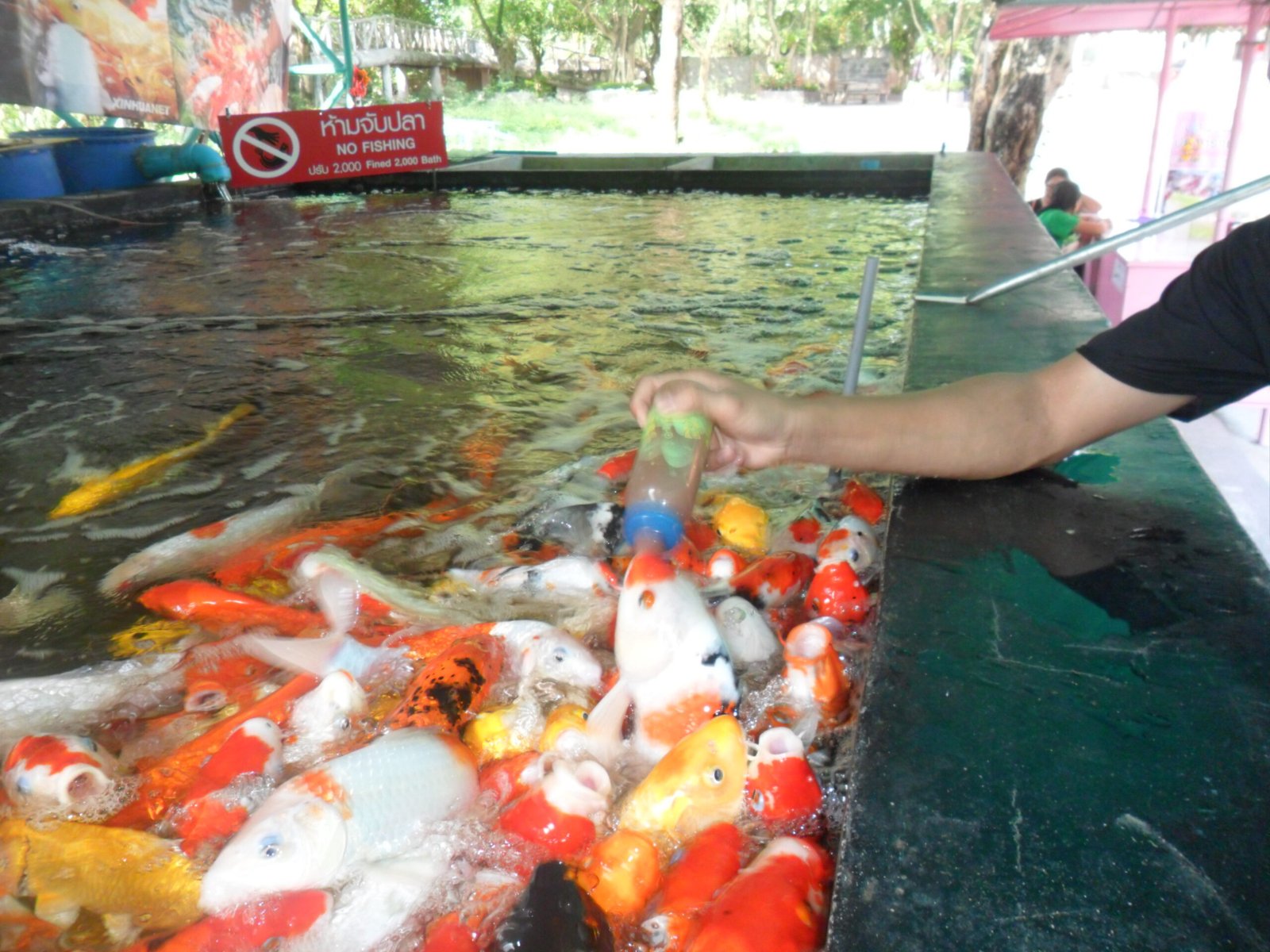
Proper nutrition plays a crucial role in maintaining the health and color vibrancy of both koi and carp. Their dietary requirements change with water temperature, season, and life stage, requiring careful attention to protein levels, vitamin content, and feeding frequency. High-quality koi food contains color-enhancing ingredients like spirulina and carotenoids that intensify red and yellow pigments.
Understanding their digestive system helps explain why feeding practices must adapt to environmental conditions. During cooler months, their metabolism slows dramatically, requiring less frequent feeding and easily digestible foods. Overfeeding during these periods can lead to serious health problems, including digestive issues and reduced immune function. Experienced koi keepers learn to read their fish’s behavior and adjust feeding schedules accordingly.
Disease and Immunity: Natural Defenses

Both koi and carp possess robust immune systems that have evolved to cope with various pathogens and environmental stresses. Their skin secretes protective mucus containing antimicrobial compounds, while their immune cells can recognize and respond to specific threats. However, the stress of transportation, poor water quality, or overcrowding can compromise these natural defenses, making fish susceptible to bacterial, viral, and parasitic infections.
Common diseases affecting both species include bacterial infections, parasitic infestations, and viral conditions that can spread rapidly through dense populations. Early detection and treatment prove essential for maintaining healthy populations, whether in natural waters or ornamental ponds. Quarantine protocols and regular health monitoring have become standard practices among serious koi keepers and aquaculture operations.
Water Quality: The Foundation of Life

Water quality management represents perhaps the most critical aspect of successfully keeping koi and carp. These fish require specific parameters for optimal health, including appropriate pH levels, dissolved oxygen concentrations, and minimal ammonia and nitrite levels. The nitrogen cycle, driven by beneficial bacteria, converts toxic fish waste into less harmful compounds, creating a balanced aquatic ecosystem.
Filtration systems must handle both mechanical and biological filtration, removing debris while maintaining populations of beneficial bacteria. Seasonal changes affect water chemistry, requiring adjustments to filtration capacity and maintenance schedules. Understanding these relationships helps explain why some ponds thrive while others struggle, despite housing similar fish populations.
Longevity and Growth: Living Legacies

The impressive lifespan of koi and carp often surprises newcomers to the hobby. While common carp typically live 15-20 years in the wild, properly cared-for koi can survive well over 50 years, with some documented specimens reaching over 200 years old. This longevity makes them true family heirlooms, passed down through generations and forming emotional bonds with their caretakers.
Growth rates vary dramatically based on genetics, nutrition, and environmental conditions. Koi continue growing throughout their lives, with some specimens reaching lengths of over three feet and weights exceeding 40 pounds. This continuous growth requires careful management of pond size, filtration capacity, and feeding programs to maintain healthy populations as fish mature.
Modern Technology: Innovation in Fish Keeping

Contemporary koi and carp keeping has embraced technological advances that would amaze traditional practitioners. Automated feeding systems, computerized filtration monitoring, and smartphone apps for tracking water parameters have revolutionized pond management. UV sterilizers, protein skimmers, and ozone generators provide tools for maintaining pristine water quality even in challenging conditions.
Genetic testing now allows breeders to identify specific traits and predict outcomes with unprecedented accuracy. DNA analysis can reveal hidden genetic potential, helping breeders make informed decisions about which fish to pair for desired characteristics. This technology has accelerated the development of new varieties while preserving the genetic diversity essential for healthy populations.
Conservation Efforts: Protecting the Future

Wild carp populations face increasing pressure from habitat loss, pollution, and climate change, despite their reputation for resilience. Conservation efforts focus on protecting native populations while managing introduced species that may threaten local ecosystems. Genetic research helps identify pure strains worthy of preservation, particularly in regions where hybridization with introduced varieties has occurred.
Captive breeding programs maintain genetic diversity within koi varieties, ensuring that future generations can continue enjoying these living artworks. International cooperation between breeders, researchers, and conservation organizations helps coordinate efforts to preserve both wild carp populations and culturally significant koi varieties. These collaborative efforts represent a bridge between traditional practices and modern conservation science.
The Economic Impact: A Multi-Billion Dollar Industry
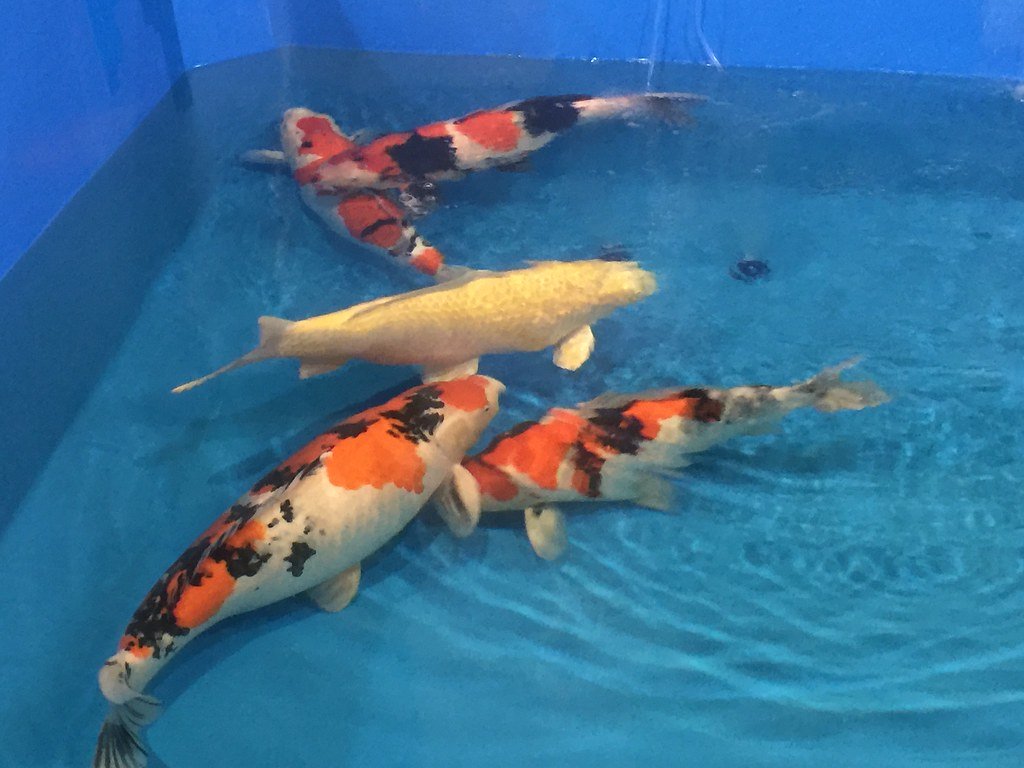
The global koi and ornamental carp industry generates billions of dollars annually through fish sales, equipment manufacturing, pond construction, and related services. Japan remains the premier source for high-quality koi, with champion specimens selling for hundreds of thousands of dollars. This economic impact extends far beyond the fish themselves, supporting countless businesses and employment opportunities worldwide.
Koi shows and competitions attract thousands of participants and spectators, creating tourism opportunities and cultural exchange. The industry has spawned specialized publications, educational programs, and professional associations that maintain standards and promote best practices. From small local pet stores to large commercial operations, the ripple effects of koi keeping touch many economic sectors.
The remarkable journey of koi and carp from their ancient origins to their current status as both ecological survivors and living art forms illustrates the complex relationship between humans and nature. These evolutionary cousins have adapted to virtually every freshwater environment on Earth while simultaneously inspiring centuries of artistic and cultural expression. Their ability to thrive in diverse conditions, combined with their capacity for dramatic transformation through selective breeding, makes them unique among domesticated species.
Understanding their shared past reveals important lessons about adaptation, resilience, and the power of human creativity to transform the natural world. Whether swimming in muddy rivers or ornamental ponds, these remarkable fish continue to captivate our imagination while reminding us of our responsibility as stewards of aquatic ecosystems. What other secrets might these ancient survivors still hold, waiting to be discovered by future generations of enthusiasts and scientists?



